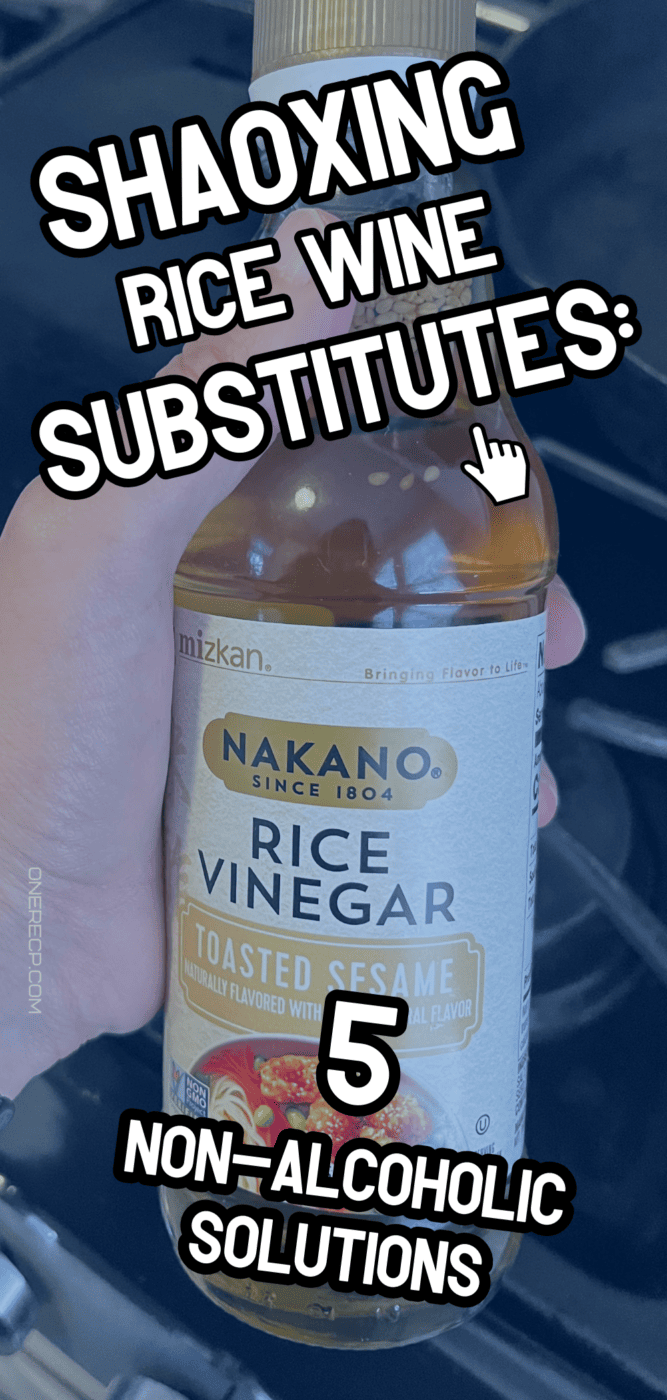Chinese cuisine is full of exotic spices which create a bouquet of flavors that are hard to replicate with western ingredients.
As a result, topping off your favorite Chinese recipes with a Shaoxing wine substitute that is also non-alcoholic can be a difficult task.
Despite this, I’ve managed to find a couple of alcohol–free alternatives that can make your dishes equally tasty and authentic.
Some of them, like apple cider vinegar, are probably already in your kitchen pantry, but there are others that will be a bit harder to find.
The best Shaoxing wine substitutes that are also non-alcoholic
The non alcoholic substitutes for Shaoxing wine in this article can be used in a variety of different dishes.
However, you’ll need to carefully consider each one since they serve different purposes.
Stock, for instance, does a wonderful job as a replacement in stir fries and sauces, but isn’t as effective in braises or other dishes requiring an ample amount of rice wine.
In these cases, it would be better to use some of the other substitutes on this list.
Rice vinegar mixed with white grape juice
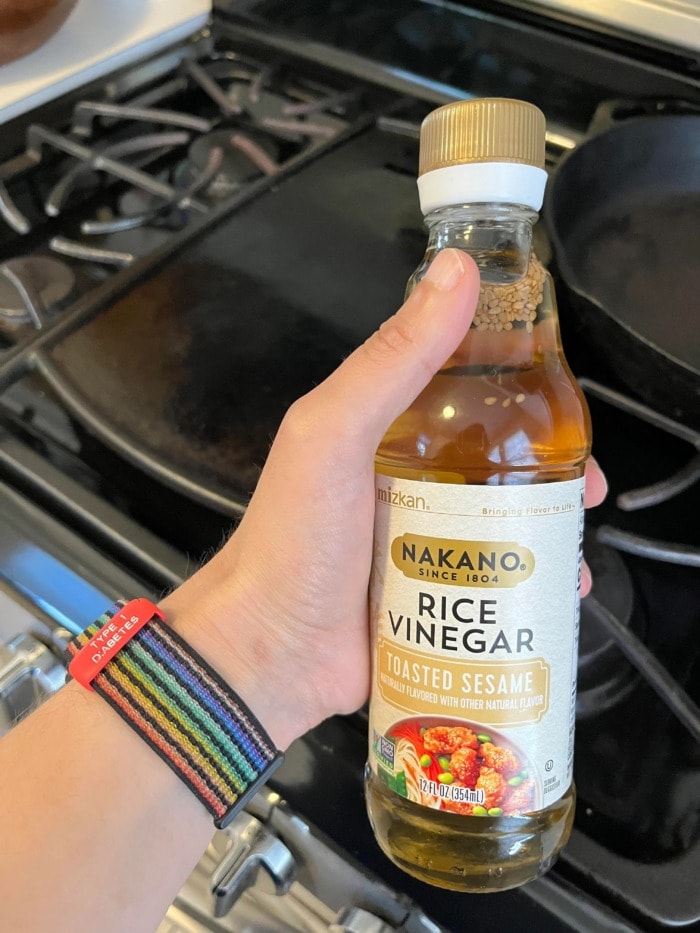
by Thea_From_Juilliard
If you don’t have Shaoxing wine at hand, you can use a mixture of rice vinegar and white grape juice as a substitute.
This is perfect for dishes that require larger quantities of Chinese cooking wine like Red Braised Chicken (Hongshao Ji).
The white grape juice adds a touch of sweetness which is nicely balanced by the acidity of the rice vinegar.
To make the mixture, you’ll need to simply combine one tablespoon of rice vinegar with half a cup of white grape juice for every cup of Shaoxing wine.
Both of these ingredients can also be used as a replacement in recipes that call for a small amount of rice wine.
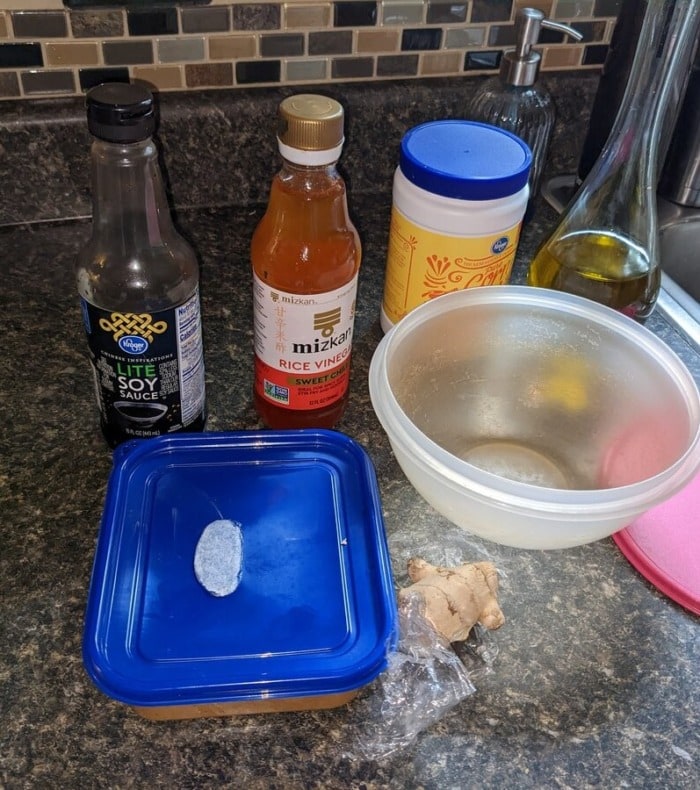
by detroitdad
I like using white grape juice for my glazes as it gives them a nice glossy coat, while rice vinegar is my go-to Shaoxing wine substitute in marinades.
I don’t recommend using them on their own for dishes requiring larger amounts of Shaoxing wine, as this will ruin the overall flavor.
As a final note, you can also cut the acidity of the rice vinegar with honey instead of white grape juice. I find this to be useful for sauces and glazes which have a thicker texture.
Stock
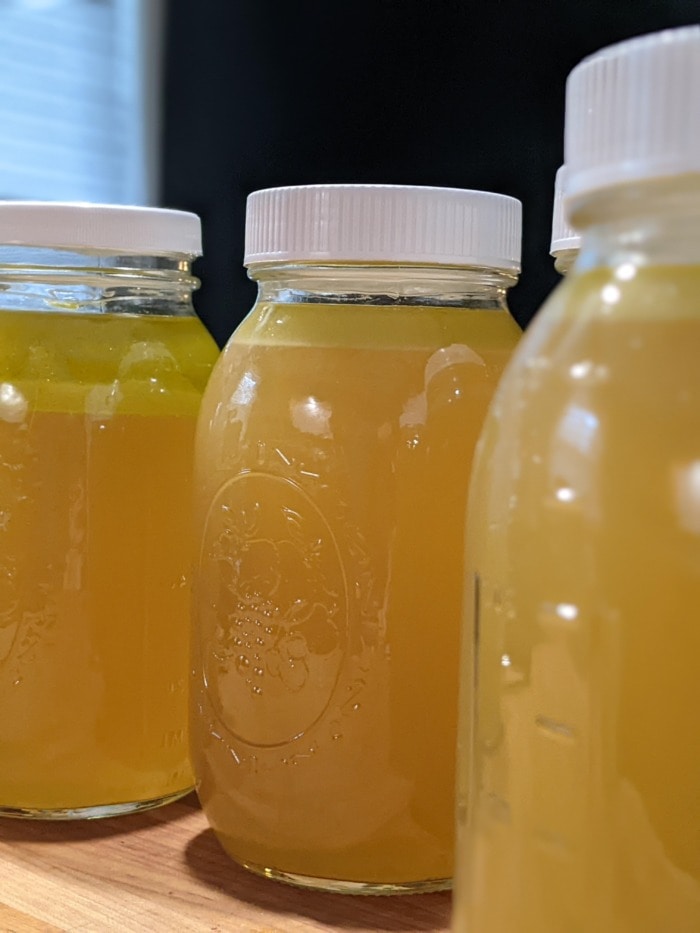
by an-idiot-sandwhich
One of the best halal substitutes for Shaoxing wine is stock.
By using stock instead of Shaoxing wine in your recipe, you’ll retain its savory flavor without sacrificing the texture.
Furthermore, if you’re preparing a protein-based dish like Kung Pao Chicken you can use any leftover bones as a base for the stock.
Another great thing about stock is that you can create a batch and store it in the fridge for later use.
This way you won’t have to worry about any last moment trips to the grocery store. God, I hate those…
With this in mind, you shouldn’t use stock for recipes requiring more than 2 tablespoons of Shaoxing wine as it will ruin the overall flavor of the dish.
Alcohol-free beer or white wine

by ThatGirlWithAGarden
Even though they’re not the best substitute, non-alcoholic beers and white wines can also be used as a Shaoxing wine replacement.
You can add them to sauces and stir-fries that need more acidity.
However, Chinese cooking wine is sometimes used as a flavor-enhancing ingredient due to its alcohol content.
In these cases, it’s better to use one of the other substitutes instead.
Author’s note: Alcohol is often used as a cooking solvent as it helps break down many flavors which are not soluble in water or oil.
You should keep in mind that the terms alcohol-free and non-alcoholic are not interchangeable. Beers and wines labeled as ‘non-alcoholic’ may contain up to 0.5 percent of alcohol, whereas those that are alcohol-free contain no alcohol whatsoever.
Apple cider vinegar

by EddieAdams007
Apple cider vinegar is another ingredient that can be used as a substitute for Chinese cooking wine.
It is slightly more acidic than rice vinegar, but it’s still on the mild side compared to other types of vinegar.
It has a subtle hint of apple flavor that can elevate the taste of your dish provided it’s used in small amounts.
You can use apple cider vinegar as a 1:1 substitute in marinades which don’t require more than 1-2 tablespoons of the staple Chinese cooking wine.
For example, I use this type of vinegar instead of rice wine when making my Steamed Pork Buns.
Honteri Mirin
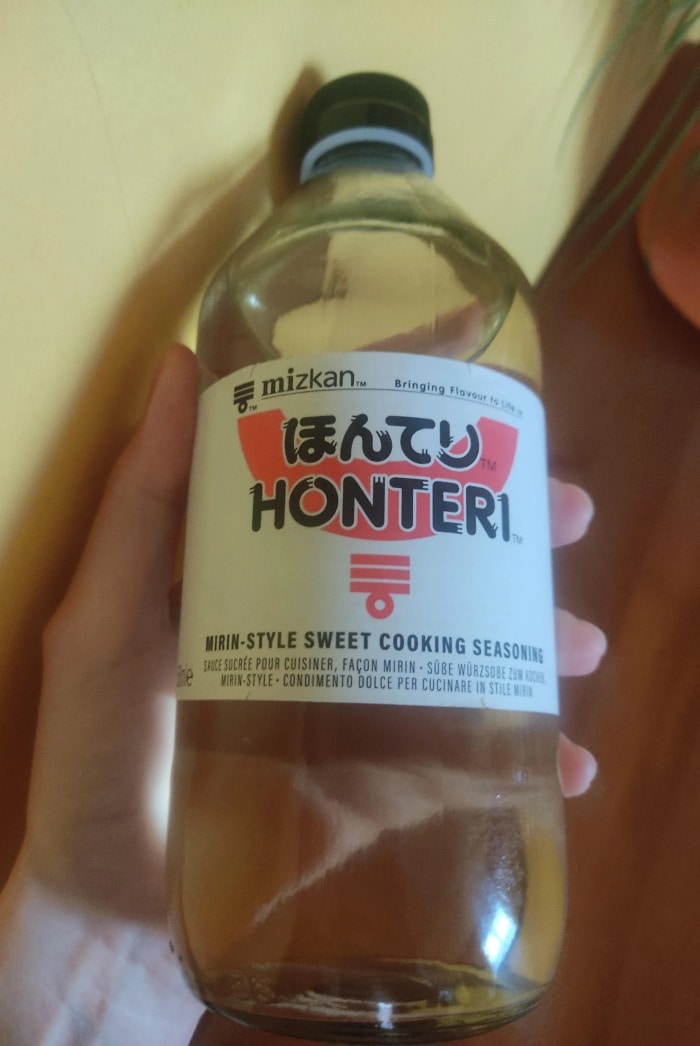
by ranabananana
The last substitute on this list isn’t strictly non-alcoholic, but might still prove useful to some.
Mirin is a rice wine that’s a natural part of Japanese cuisine.
Its flavor is close to that of sake, but it contains more sugar and has a lower alcohol percentage.
However, unlike sake, you can find a special type of Mirin that is used entirely as a condiment called Honteri.
Honteri is a sweet seasoning that contains less than 0.5% alcohol and is commonly used in popular Japanese dishes such as ramen, teriyaki sauce, and yakitori.
The umami flavor of Honteri mirin makes it a great substitute for Shaoxing rice wine as long as it’s used in small quantities. And I mean really small.
While most Shaoxing wines contain no more than 1% sugar, more than 52% of Honteri Mirin is actually sugar. For most glazes and marinades this means adding no more than a small pinch.
Does alcohol burn off during cooking?
I can’t count the times I was told not to worry about adding alcohol to my dishes.
Whenever I was in doubt, there was always someone who simply couldn’t miss the opportunity of showing his cooking expertise.
And I must admit that most of the advice I received did sound convincing at the time.
Or at least that was what I thought.
According to a study conducted by the American Dietetic Association, most dishes can contain alcohol even after being cooked at the boiling temperature of alcohol. What’s more interesting however is that stews and other slow-cooked dishes can retain up to 5% of alcohol after two and half hours of cooking.
It was found that the amount of alcohol left over after cooking was linked to several different factors such as the surface area of the pan and the amount of heat that was applied.
So if you want to be completely sure there’s no alcohol in your favorite recipe, you should avoid using any condiments that might contain it, including regular soy sauce. If you’ve found the Shaoxing win substitutes I listed – let me know in the comments!
